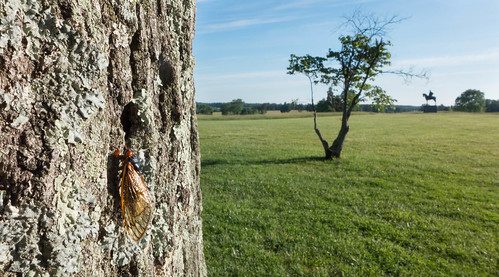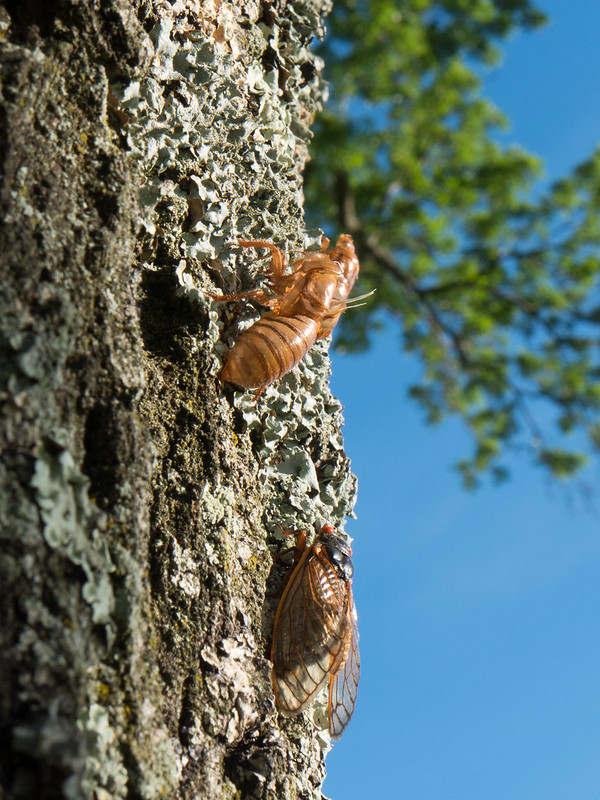History Bug, by Reed A. George
Panasonic Lumix DMC-LX7
iso 100, f7.1, 1/250 sec
On Memorial Day weekend, I went to the Manassas National Battlefield a few times for some shooting. In the image above, you can see Thomas "Stonewall" Jackson's statue to the far right on the horizon. Up close, you see a 17 year cicada, freshly molted from the nymph stage into the adult.
(Click Here) to read about the cicadas of 2013.
Cicadas live between 13-17 years underground, and emerged in synchronized fashion with their siblings. Scientists don't know for sure why they do this - some believe it's to avoid predation, both by being unpredictable because of the long time scale and by safety in numbers making it more likely that some of them will get through. Others believe it's due to climate changes, whereby colder weather severely slowed down their previously faster development.
You Can Never Go Home, by Reed A. George
Panasonic Lumix DMC-LX7
iso 100, f8, 1/250 sec
In the picture above, you see the adult (lower center) next to the molted skin of a nymph. Quite a change in body plan, huh?
Big Year for the Cicadas, by Reed A. George
Panasonic Lumix DMC-LX7
iso 100, f3.5, 1/250 sec
As you can see in the picture above, there are a lot of cicadas in this year's brood. Those are the abandoned nymph skins left behind after moulting.
This subject reminded me again of the flexibility of the little Lumix DMC-LX7. I was also carrying my Leica M9 with Summaron 3.5cm f3.5 LTM lens and my Minolta Autocord TLR. Neither of them could have made these images. Even with the Rolleinar close up lens on the the Autocord, I couldn't have come close to this focusing distance. The LX7 sure does a lot of things right.
DMC-365.blogspot.com



No comments:
Post a Comment